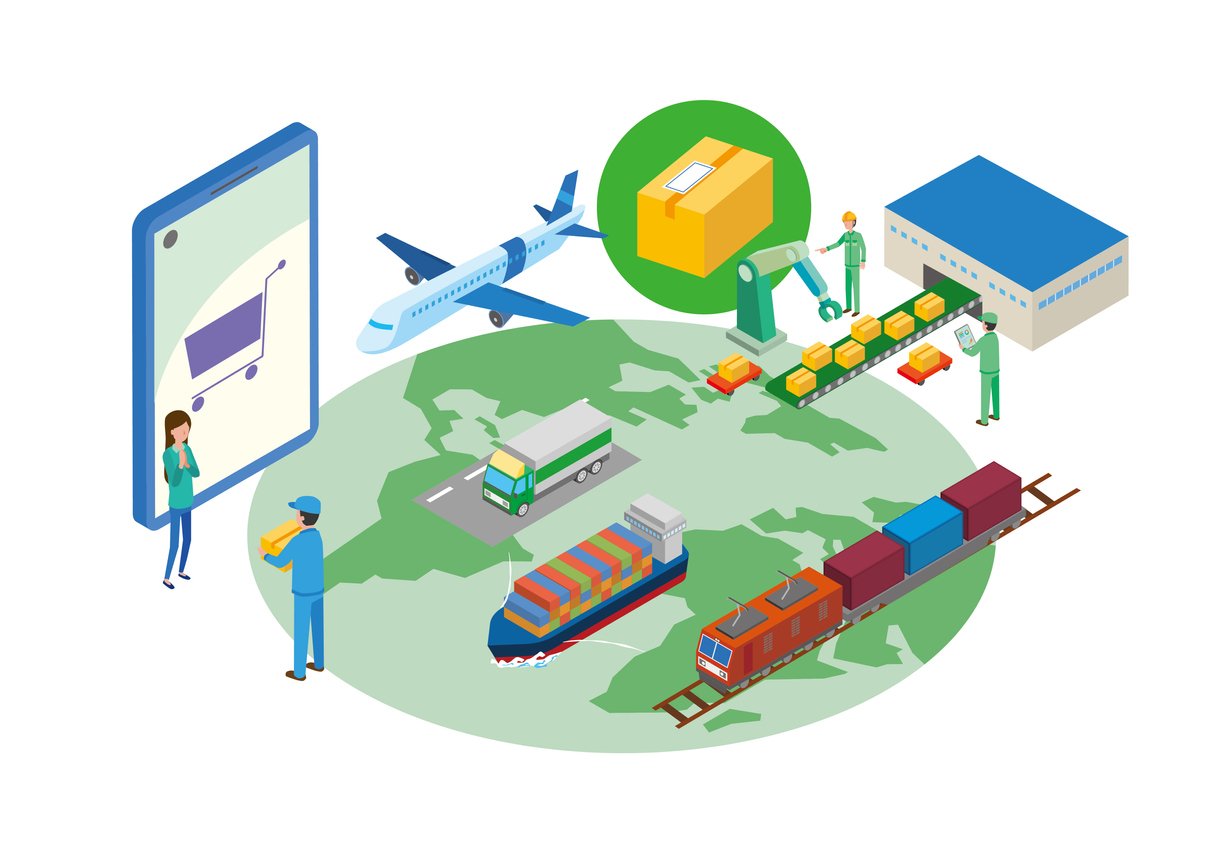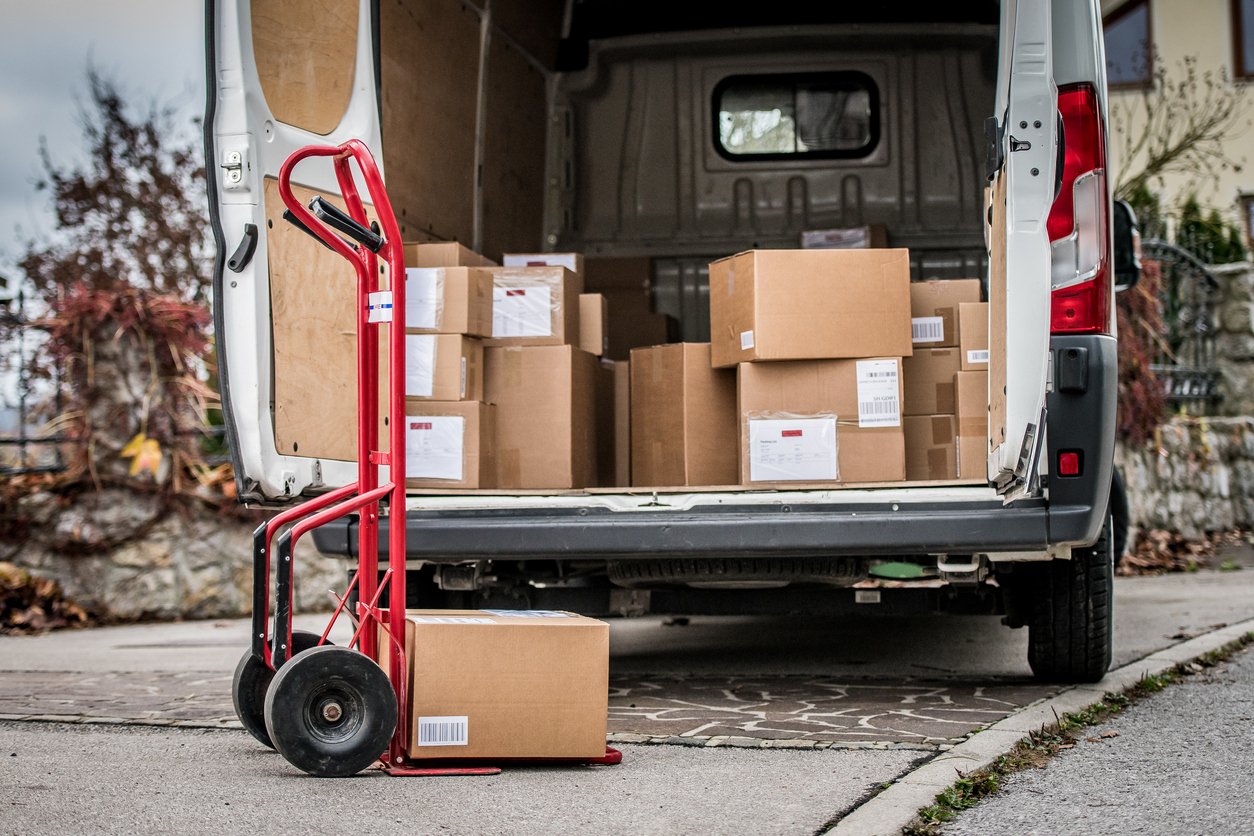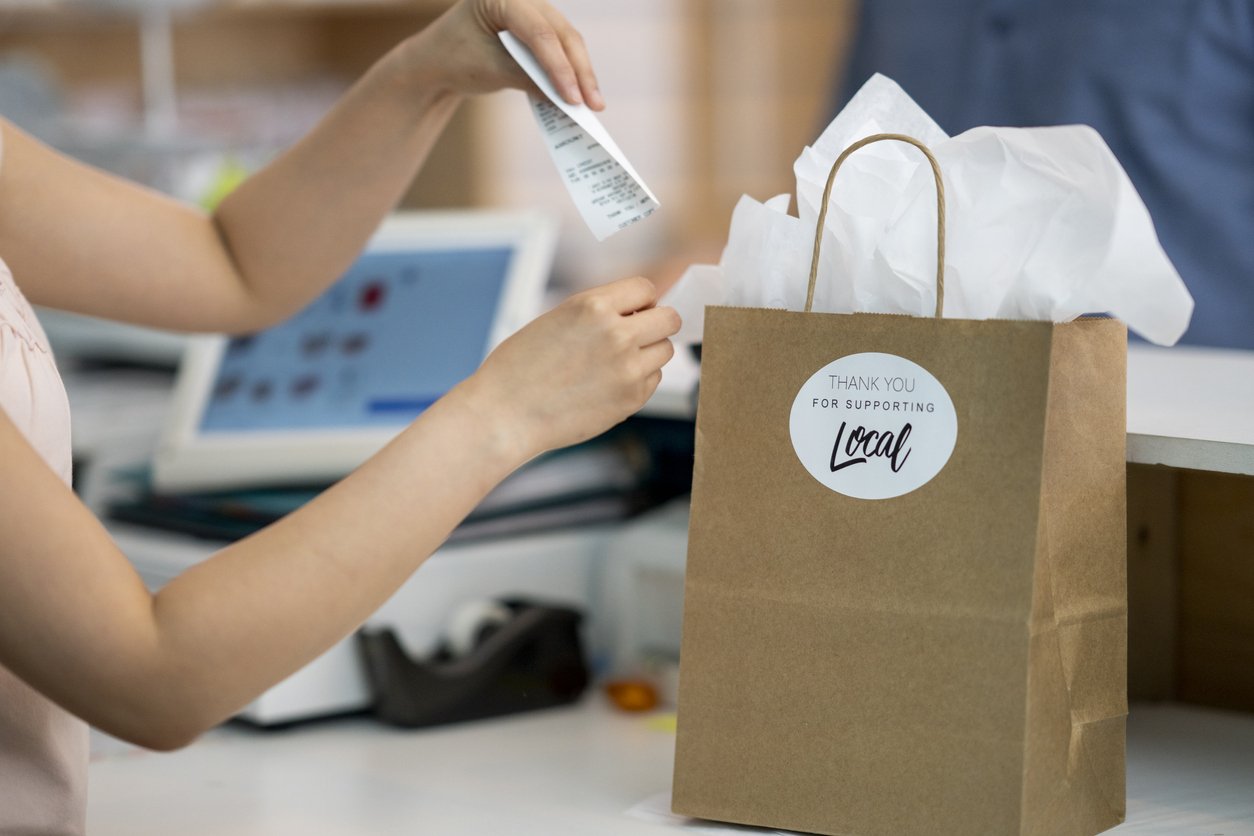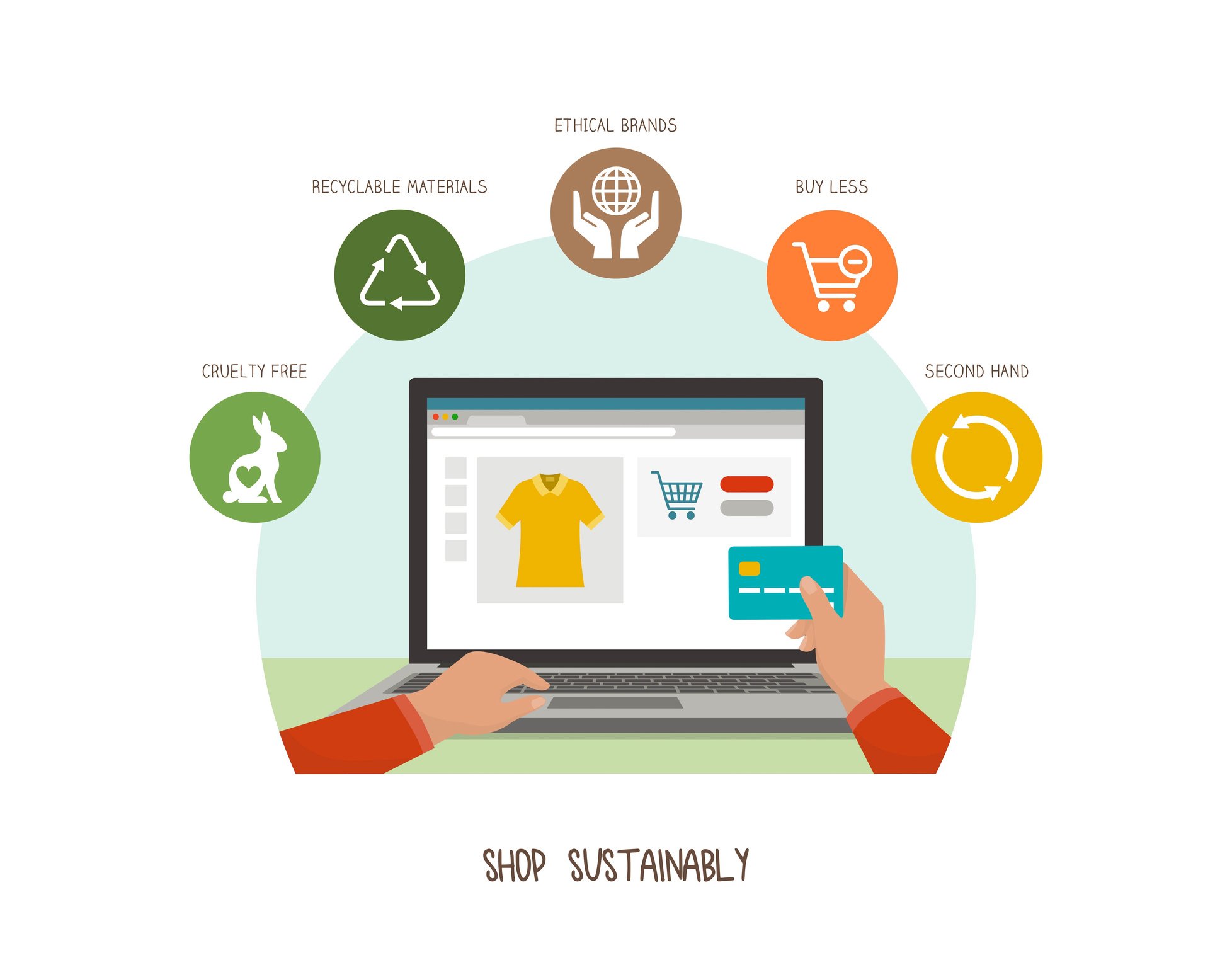Imagine that you’ve just put an item in your online shopping cart — a new electronic gadget, or a tool that you’ll need for that next home improvement project. You’re eager to start using it tomorrow. And, lucky for you, you’re ordering from a website that offers, along with slower options, free next-day shipping.
You get to the checkout page, where your default credit card information and shipping address are stored. Before you get to the “Place Your Order” button, you are asked to select a shipping option. And the option to receive the item in 3–4 days is labeled “GREEN | SAVE 100 TREES.” Do you still want to receive your purchase in 24 hours, or are you willing to wait a few days?
When an MIT sustainability researcher ran that very experiment with Mexico’s largest online retailer, over 70% of shoppers agreed to the tree-saving delayed shipping. And when they did, the environmental impact of their purchase was actually less than if they had bought the same item at a local store.
So the answer to whether online shopping is sustainable is very much a big “it depends.” It depends partly on retailers and their policies. It depends partly on what it is that you’re buying. And it depends partly on the shipping speed you select.
In this article, we’ll look at the state of online shopping, and identify several high-impact strategies you can use to be as environmentally friendly as possible when shopping online.
Online Shopping Is Probably Here to Stay
Since its inception over 30 years ago (I have a friend who remembers ordering a bag of pistachios via their Compuserve account in 1990), online shopping has become increasingly popular year after year. The pandemic caused a noticeable spike in online purchasing, as it became necessary for many people to avoid stores during stay-at-home orders and to reduce their risk of contracting the virus.
But COVID aside, is online shopping a good thing for public health and the state of the planet? Especially when some major online retailers don’t have the most ethical or sustainable business practices, and offer products that are far from environmentally responsible?
Or course, online shopping tends to displace local businesses — many of which are struggling to survive. There are some really good reasons to support local businesses, and local food systems, in particular. But more and more small-scale (not necessarily local) businesses are selling through big online merchants, like Amazon. Many of them appreciate your support, too. So while supporting local merchants can be a wonderful thing, it isn’t necessarily a clear-cut equation.
In order to understand the role online shopping can play in an environmentally conscious lifestyle, and how we can shop most sustainably, we need to look at the environmental costs — especially the carbon footprint — of each aspect of the retail ecosystem. These include transportation, packaging, shipping, and the particular policies and practices of online retailers and brands.
Online Shopping Transportation
All shopping, whether online or brick-and-mortar, involves moving things from one place to another. Among those things to move around are raw materials, the equipment used to convert those raw materials into finished goods, the workers who travel to factories and offices to make those goods, and the goods themselves, either to distribution hubs like warehouses, supermarkets, and showrooms or directly to consumers.
And all that transportation is one of the largest contributors to human-caused greenhouse gas (GHG) emissions. According to the US Environmental Protection Agency, freight transportation makes up 8% of global GHGs and 27% of US emissions.
As a shopper, you don’t have direct control over the supply chain for raw materials or the transportation infrastructure that brings laborers to factories and business parks. But you do have a large say in what you buy, and in how quickly a product moves from your online shopping cart to your mailbox.
Green online shopping tip #1: Don’t buy stuff you don’t need
In an often consumption-obsessed culture, this might not be a very popular thing to say. But the #1 way to reduce your shopping footprint is to steer clear of stuff you don’t need. Every gadget, tool, furnishing, or food item you buy has an impact. And often, that impact includes adding more plastic, and more waste, to the world. So it can be wise to ask, “Do I really need this, and is it worth the cost in money and in environmental impact?” Simply taking a moment to pause can wind up saving resources, saving landfill space — and, of course, saving you real money.
Green online shopping tip #2: Choose slower delivery options when possible
One of the biggest contributors to online shopping’s carbon footprint is rapid delivery. Big online retailers have discovered that customers love fast shipping, and many impulse buys are consummated with the promise of same-day delivery.
I get that — it’s only human to want to scratch that itch as quickly as it appears. And sometimes, we truly need things in a hurry. If I can get a truck to deliver a valve in two hours, and that valve can keep my kitchen pipe from leaking onto the subfloor and into the crawl space, then it makes sense to get it as quickly as possible.
But the urge for instant — or next-day — gratification comes with a big environmental cost. The quicker you demand delivery, the less efficient the delivery process. Companies may send out vans and trucks filled to only 10–20% of their capacity, rather than the 80–90% that’s possible when purchases are batched and vehicles can wait until they’re full before leaving the warehouse.
The MIT researchers who studied Mexican shoppers’ responses to the green button that saved trees were interested in that response for a simple reason — it turns out that online shopping can actually be greener than traditional retail. If you order online and are willing to wait for delivery until the delivery vehicle is close to full, your order will produce half the carbon emissions than if you had driven to a local store to make your purchase.
But rush online delivery inverts this relationship. When consumers click the “I want it as soon as possible” button, the emissions are far greater than from in-person shopping.
Green online shopping tip #3: Group your purchases
Another way to influence the environmental footprint of your shopping is how much you batch purchases, as opposed to buying one thing at a time. To give you an extreme example, imagine driving to your local grocery store with a shopping list of 20 items and buying a single item, driving it home, and then returning to the store for another one, and returning home, and doing this 18 more times.
That would be ridiculous, right? But in a sense, we do the same thing when we order a single item from Amazon or Walmart.com and check out right away. Piecemeal ordering, especially when combined with rapid delivery, uses far more energy than grouping multiple items into a single order.
That’s one of the great potential benefits of online shopping — a single truck or van can theoretically replace multiple car trips, by multiple households, to multiple stores. When you batch your purchases and refrain from checking out until you’ve bought everything you’re going to need for a while, you increase the efficiency of the system.
If you’re an Amazon Prime member, you can choose to have all your purchases arrive on “Amazon Day” by selecting that shipping option. That gives Amazon the leeway to put your purchase on its truck in the most efficient manner, rather than the fastest.
Green online shopping tip #4: Shop in-store or online, but try not to do both
Often, it’s hard to decide if we want an item when we can only study the specs, look at pictures and videos, and read other people’s reviews. Sometimes we want to touch it, hold it, and put it to the test — which we can do if a local store carries that item.
But for various reasons, it’s often cheaper to buy the item online. So we might end up creating double the transportation: first with our exploratory shopping trip, and second by requiring a separate home delivery.
I know it’s tempting to save money. But if it’s at all possible, I’d urge you to make the purchase at the local store if the item satisfies your needs. For one thing, your carbon footprint is considerably lower. For another, if it’s a locally owned business, the money stays in the community longer and benefits more people before joining the global cash pool. And you’re also contributing to local employment, and the maintenance of jobs that are typically better paid, with better working conditions than the warehouses of the giant online retailers.
Also, I’d argue that a local business that pays rent and electricity and employees so that you can shop in person may actually deserve to be compensated for that service. If your finances permit, perhaps consider any price difference between the local store and the online retailer as a fair trade for a fuller, more human shopping experience.
Another way to reduce the transportation carbon footprint of your shopping is to either go all-local or all-online. If you buy half of your groceries at a local store and get the other half delivered from an online site, you could be effectively doubling the number of trips required to get your stuff.
Green online shopping tip #5: Buy direct from merchants when possible
While waiting to fill an Amazon shopping cart and choosing Amazon Day shipping can go a long way to reducing your environmental impact, your shopping may still be overly heavy on transportation simply due to the fact that you’re buying from an online marketplace rather than a single source.
The seven items that comprise your single order may come from seven different drop-shipping locations rather than a single Amazon warehouse. This can increase the transportation chain considerably, and it’s almost inevitable if you shop from multiple vendors through one marketplace.
You can reduce the number of trips your purchases require by buying directly from the companies that make the products, rather than from an online marketplace like Amazon. It’s also a good way to support those companies directly, especially if they’re smaller. Amazon takes a cut of their revenues. And many small manufacturers have no choice but to pay those stocking and shipping fees since Amazon exerts near-monopolistic control of many markets. When you buy direct, you give more of the money to the business itself.
Of course, there are plenty of situations where local in-store shopping is far more environmentally friendly than online. If you’re out and about anyway, popping into the boutique clothing store or local natural foods store can help you get the most from your errands.
And there’s something to be said for supporting local businesses to increase your community’s resilience. We saw how the global supply chain wobbled (and in some cases, broke for a while) during the early months of the COVID-19 pandemic. Shopping from local businesses and farmers who have a shorter supply chain can not only be more sustainable but raises the odds that those businesses and farmers will be there to take care of you in the event of another global or national disruption.
Online Shopping Packaging
While transportation is one of shopping’s biggest contributors to GHG emissions and climate chaos, another significant environmental polluter is the packaging that contains and protects the stuff we buy.
If you buy a half-pound bag of cacao nibs at your local natural foods store, your packaging will consist of the foil-lined plastic bag, and whatever you bag your groceries in — likely paper, cardboard boxes available in the store (a good way to reuse before recycling), or reusable sacks you bring from home.
That same bag delivered from Amazon might come in a cardboard box all of its own, surrounded by air-filled plastic bubbles to protect it from bouncing around in transit. And many small items, such as batteries, may be packaged in a blister pack, put into a small box or wrapped in paper or bubble wrap, then placed into a larger box, and then combined with other items in a big corrugated cardboard box.
If you’re ordering perishable items, you’ll get those in coolers that are especially wasteful. In addition to the usual cardboard boxes and tape, you’ll often also receive freezer packs and environmentally unfriendly insulation and protection materials like styrofoam.
Even if the packaging just consists of cardboard, which is theoretically recyclable, much of it still ends up in landfills. All told, cardboard and paper make up around 41% of the entire US solid waste stream, which is the single largest component of all municipal solid waste.
It’s hard to avoid excess packaging whatever you do. Even when you shop locally with your own reusable grocery bags made from recycled soda bottles, the items you’re buying arrived at the store in cases, cartons, or pallets, all of which produce packaging waste that’s largely invisible to you (unless you go behind the store and watch while they’re loading the dumpsters or crushing boxes for disposal).
The only sure way to reduce packaging is to buy direct from growers or manufacturers, to grow or make it yourself, or to buy less stuff, in general.
Green online shopping tip #6: Choose minimal packaging when available
One thing you can do to reduce the packaging from online purchases is to choose items that can be “packaged green,” using minimal materials that ideally are recyclable and compostable as well. Amazon, Walmart, and Chinese e-commerce behemoth Alibaba are among the companies beginning to offer green packaging options to their customers. And several start-ups are innovating more and more environmentally responsible ways to contain and protect goods in transit.
Brand and Retailer Practices
Different brands and retailers have very different approaches to environmental sustainability. Some have made it a core aspect of their missions, while others prioritize profit and market share at the expense of the greater good. (Below you’ll find a list of online shopping sites that make it easy to shop more ethically and sustainably.)
As we’ve seen, buying from an online business directly instead of through Amazon and other larger sites is a good way to support that business, as they receive more of the money from the exchange. And supporting local and small businesses can be a good way to keep money flowing and growing in your local economy.
But regardless of where you shop, there are some questions to consider when looking for sustainable brands and placing items in your shopping cart (real or virtual).
Shopping online for food items:
- Is the item produced using factory farming or other highly industrialized farming practices? Or is it organic or produced using sustainable and regenerative farming?
- Does the food contain bioengineered (GMO) ingredients or have unsafe concentrations of pesticides?
- Is it an animal-based food (which tends to have a much higher carbon footprint than plant-based foods)?
- How far away does the food travel? (Local food is also more sustainable and there are more and more options from places like CSAs and food co-ops to buy online and have your products come directly to you from farmers.)
- Does it have an ethical food label that considers the welfare of indigenous peoples, farmworkers, and the environment?
Shopping online for personal care products and other items:
- Does the company produce nontoxic products that are safe for people and the environment?
- Do they test on animals? (You may want to look for cruelty-free products with the “Leaping Bunny” logo or download the Leaping Bunny app for on-the-fly shopping.)
- Are they dedicated to being carbon neutral or offsetting emissions by using renewable energy sources?
- Do they dedicate part of their profits to making the world a better place, by supporting causes you care about?
- Do they offer a way to recycle their packaging (not just pledges, but action)? And do they use packaging that your local recycling plant can accommodate?
Where to Do More Sustainable Online Shopping
Here are a few websites from eco-friendly companies dedicated to providing a more sustainable online shopping experience. They aim to reduce plastic and other shipping waste, provide more ethical and sustainable brands (and are more so themselves), and in many cases, provide a more direct supply chain.
Sustainable Stores & Marketplaces:
- Thrive Market (contiguous US only) — natural foods, body care, and cleaning products
- Hive Brands (US & its territories only) — pantry, wellness, and pet needs
- Azure Standard (US only) — organic produce, pantry, frozen, and wellness
- Plastic Freedom (UK-based + ships internationally) — like a department store, with many different types of products
- Brown Living (India only) — gifts, food hampers, home goods
Take Care to Practice Shopping Sustainably
Online shopping continues to grow in popularity. But all that convenience and speed comes with human and environmental costs. While online shopping can actually be more environmentally sustainable than driving to a store to shop in person, that’s only the case if you employ wise shopping practices, such as choosing slower delivery options and batching your purchases.
To get serious about reducing the carbon footprint of your online shopping, consider the impact of transportation, packaging, and the brands you are supporting. You don’t need to rely on Amazon and other big box online retailers for your shopping. There are more sustainable options available, including in the grocery and personal care spaces. And of course, the most sustainable option is often to buy less stuff in the first place — which can save you money, too.
Tell us in the comments:
- What percentage of your shopping do you do online? Do you buy groceries online, or just at local shops?
- What’s one way you might reduce the carbon footprint required for transportation of your shopping?
- What’s one surprising thing you learned about doing more sustainable online shopping?
Featured Image: iStock.com/AsiaVision








